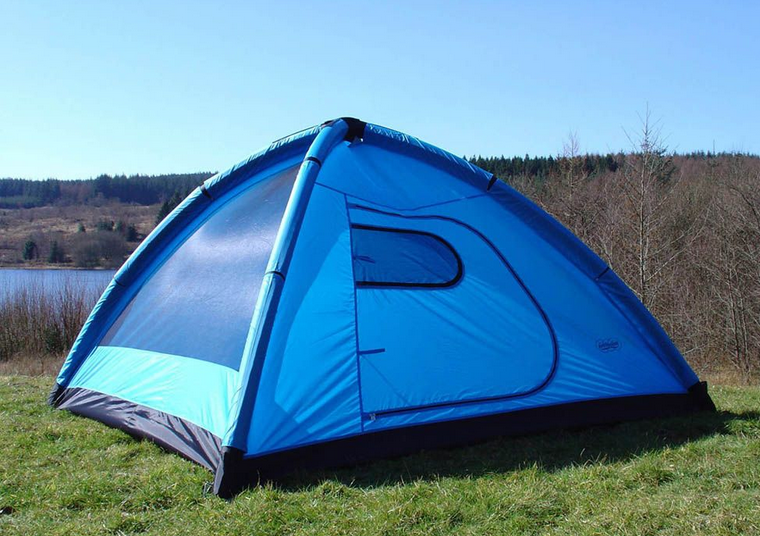
Tents are divided into many types according to the needs of use, such as camping, mountain, beach, fishing, hunting, disaster relief , jungle, military, etc. The following mainly talks about the materials and designs of camping and mountaineering tents. 600D Oxford cloth
Camping and mountaineering tents generally use light and thin polyester and nylon fabrics, which are light to carry and can improve The density of the fabric in the warp and weft direction, foreign high-end tents use 210T to 300T (warp and weft density). The higher the density, the more waterproof it will be. However, if the density is too high, the yarn will also need to be thin, so the strength will be reduced.
There are many kinds of coatings for outer tents. Camping and mountaineering tents generally use PU, PE and silver coating, with PU being the most ideal. The waterproof index of the outer tent is generally 800~2500mmH2O. If it is too high, it will affect the breathability of the tent. Foreign high-end tents rarely exceed 2500. Moreover, the waterproof index of the tent is only a dynamic waterproof index, not a hydrostatic pressure index. 2500mmH2O is just the instantaneous water pressure when rain falls. If you use 2500 water columns, it will definitely leak. The outer tent of most tents I have used will get soaked after being exposed to the rain for a long time. At this time, the design of the double-layer tent shows its advantages. The water droplets accumulated on the inside of the outer tent will slide to the ground (if the outer tent is waterproof During poor weather conditions and heavy rains, water drops on the inside of the outer tent will drip directly onto the inner tent). Based on these characteristics, it is recommended not to choose a single-layer tent for camping or mountaineering. Water droplets from a single-layer tent will slip inside the tent.
Camping and mountaineering inner tents generally use light and thin polyester, nylon, and polyester-cotton breathable fabrics. The advantage of polyester and cotton is that it has good hygroscopicity, but the disadvantage is that it is easy to mold. The advantage of polyester and nylon is that it is easy to care for. Some inner tents are made of large-area mesh, which has the advantage of good air permeability, but the disadvantage is that the light is too transparent. In summer, if you only use the inner tent, you can clearly see the inside from the outside, and it is easy for the light to leak out while sleeping.
PE, ordinary nylon, and Oxford cloth are used as ground materials for camping and mountaineering tents. Low-end products use PE bottoms, which are not wear-resistant and tend to age and become brittle. Tear-proof nylon bottoms are used in mountain tents. They have the advantage of being lightweight, but have the disadvantage of poor wear resistance and easy punctures. Oxford cloth is the most mature bottom. Oxford cloth is named with the thickness index D of the silk. 210D Oxford cloth is thicker than 150D, and its wear resistance is relatively better, but its weight is also relatively higher. The higher the waterproof index of the base material, the better, generally 2000~50000mmH2O.
The tent poles of camping and mountaineering tents generally use fiberglass poles and aluminum poles. The advantage of fiberglass rods is that they are cheap, but the disadvantages are that they are prone to aging, brittleness, breakage, and weight. The advantages of aluminum poles are that they are light and strong, but the disadvantage is that they are expensive. The material of aluminum poles is 7075T9 or 7001T6. In the early days, only South Korea, the United States and Germany could produce aluminum poles. Germany had the best quality and South Korea had the highest cost performance, so most aluminum poles for aluminum pole tents are produced in South Korea. In the past few years, domestic aluminum rods were imported from South Korea, and they came in complete sets after being determined. Later, in order to save costs, domestic aluminum pipes were imported from South Korea, cut and assembled into sets themselves, also called Korean aluminum rods. Recently I heard that a former domestic military industrial company that makes missile casings can also make aluminum tubes, but the raw materials are also from South Korea. Genuine Korean original complete sets of aluminum poles are stamped with EASTON7075.
Many friends think that both the inner and outer tents of camping and mountaineering tents must be tight. In fact, the outer tent should be made by ground nails. The rubber cord should be tight, and the inner tent of the tent pole should be slightly looser. Only with this design can there be room to stretch under strong winds. You can take a look at the wind tunnel test of the MSR tent.
Precautions for using camping and mountaineering tents:
1. When pitching a tent, the outer tent must be stretched straight to avoid contact with the inner tent. Water droplets on the inside of the waterproof outer tent will penetrate into the inner tent;
2. Do not expose the tent to high temperatures, and do not place the base fabric on high-temperature beaches or ground. This can prevent the PU from aging and reduce the waterproof performance;
3. When folding the tent, roll it up slowly and in a direction to drive away the air in the tent. If the air rolls up the tent without an outlet, the air will only It can break through the waterproof layer, which will greatly affect the waterproof performance.
24-hour customer service hotline: If you are interested in or have questions about Suzhou Textile Co., Ltd.’s Oxford cloth products, please contact the web page You can also leave a message at our online customer service, or call the toll-free hotline: 400-8379793 to meet all your needs with the most dedicated service! </p








